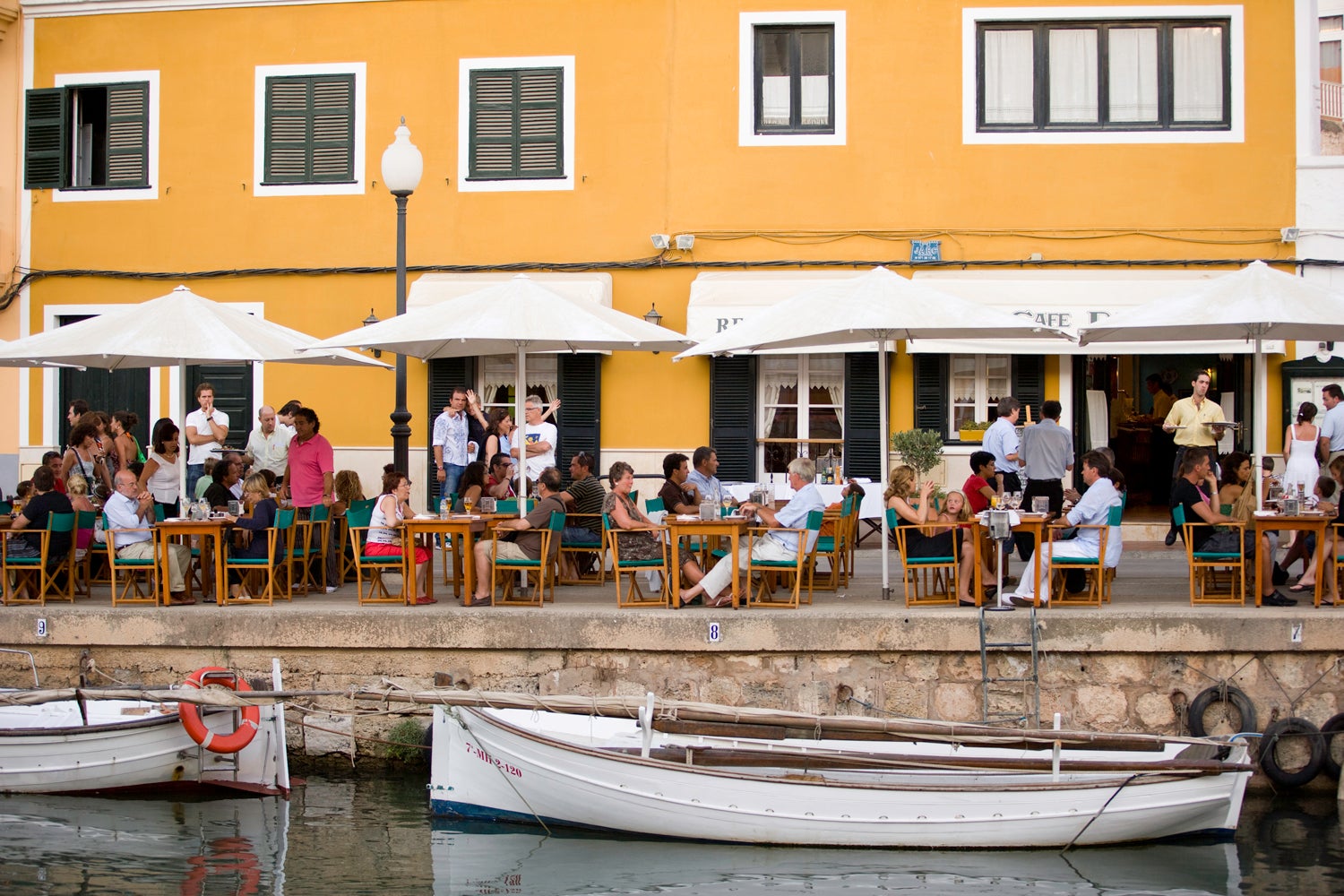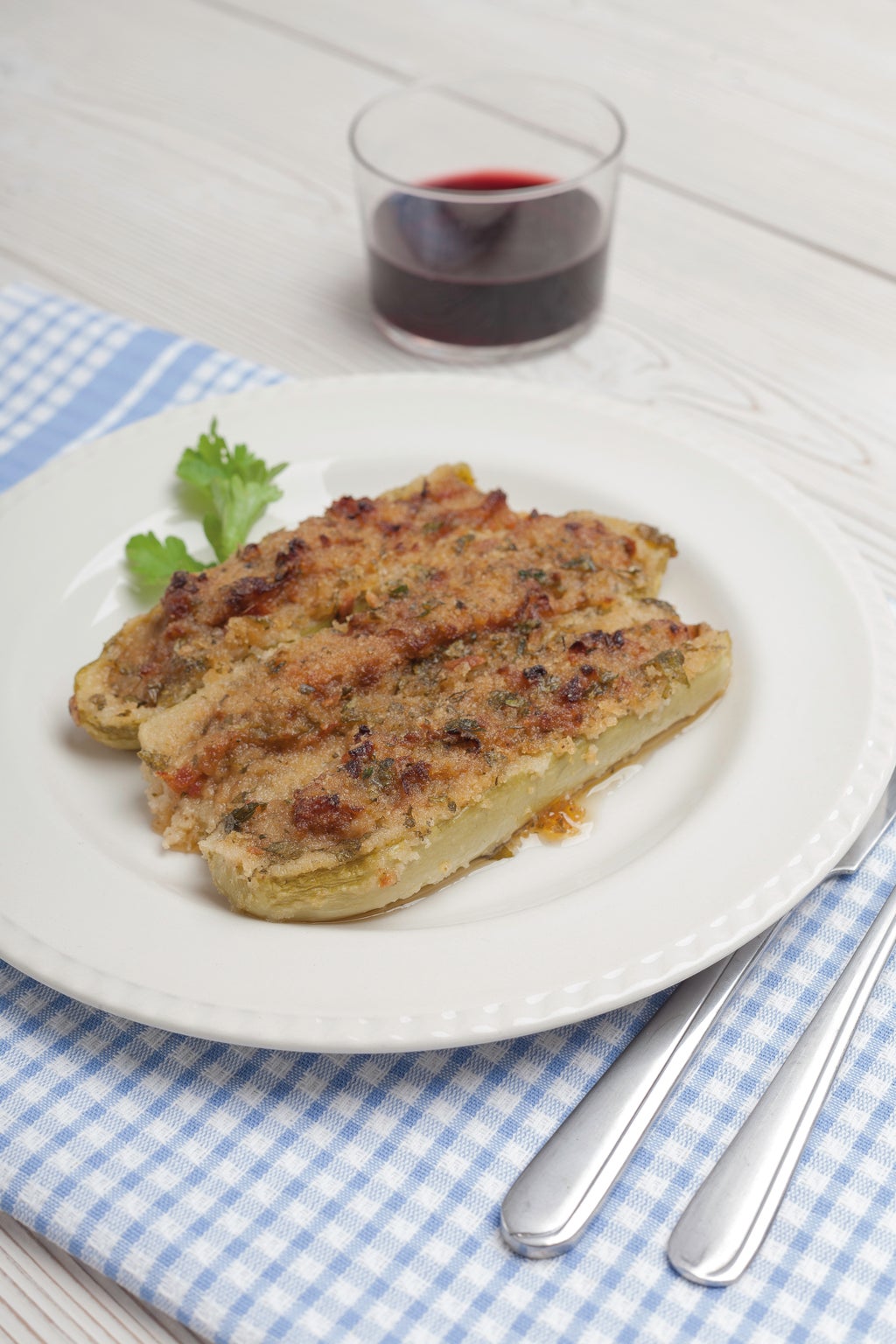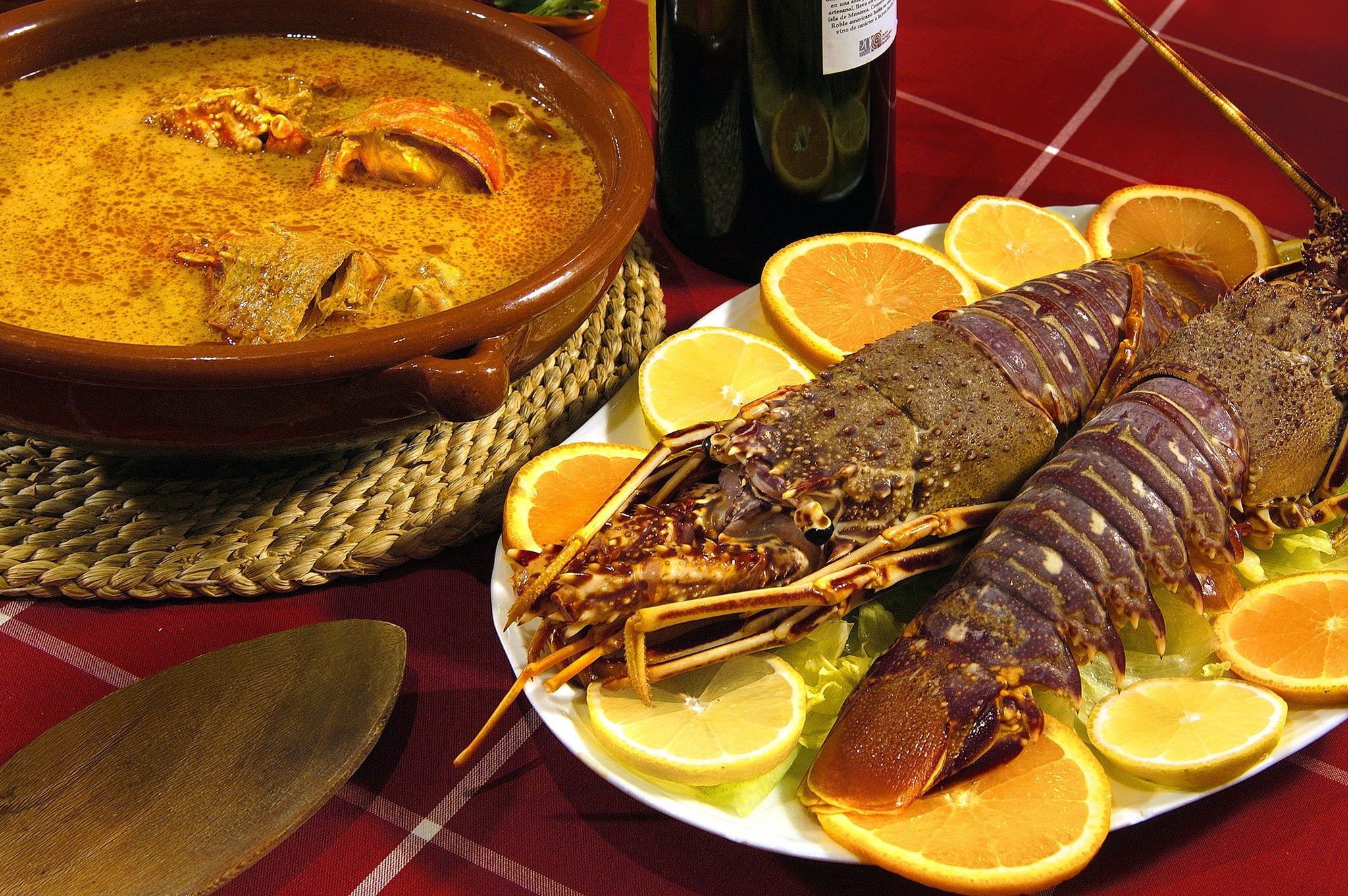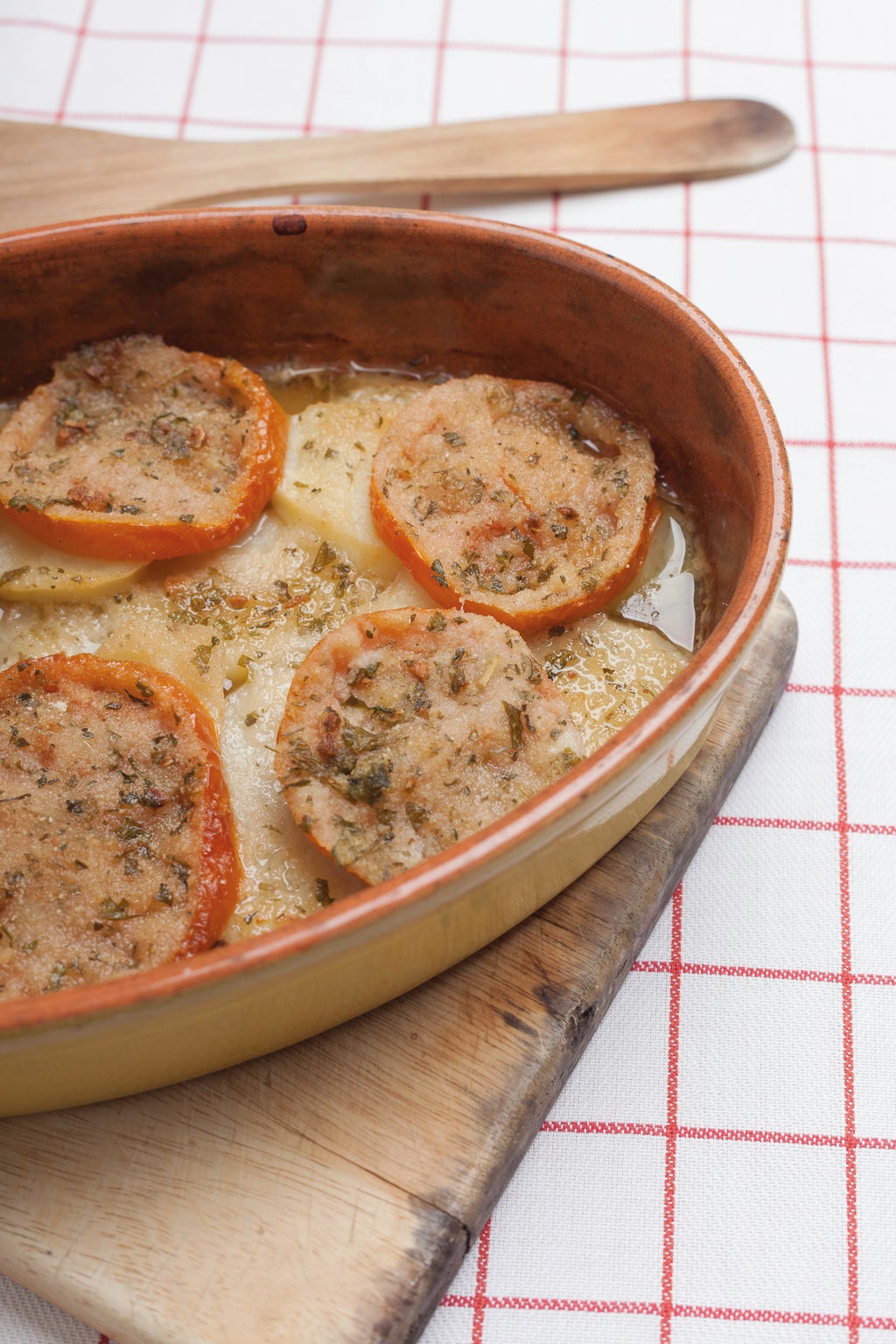Experience all the flavours of Menorca
Menorcans eat well – especially when it comes to seafood, sausages and cheese – and the island has a history of gin-distilling dating back to the 18th century, says Hugo Valentine

For an island whose waters teem with fish and crustaceans, it’s a surprise to learn that two of Menorca’s most distinctive dishes are cheese and sausage. The British first imported Friesian cows in the 1740s, and the resulting Mahón cheese (despite its name, it’s manufactured across the island) is produced by farmhouse artisans – some of them offering tastings and tours explaining how differing stages of maturity create very different flavours. With so many cattle on the island beef is, of course, another Menorcan staple; local cuts are sometimes topped with Mahón cheese for an upmarket bun-less cheeseburger.
Sobrasada is a sausage made of minced pork and red paprika, spread hot or cold onto bread (with perhaps a dollop of honey on top). Huevos revueltos may sound to British ears like ‘revolting eggs’, but is in fact a delicious combination of scrambled eggs and sobrasada. As for the legend of how mayonnaise (‘Mahon-aise’) was first invented – by a chef accompanying the invading French forces under the Duke of Richelieu: lacking cream he knocked up a sauce using eggs and olive oil – well, necessity being the mother of invention, the story has the ring of truth about it.

The most famous Menorcan seafood dish is caldereta de llagosta, a stew made out of the local spiny lobster (pictured below right, and sometimes mis-translated as crayfish) that is also justifiably expensive. There are cheaper alternatives, such as caldereta de marisco, in which the lobster shares the pot with other assorted seafood – but whichever option to you go for, try and eat it in Fornells. Es Cranc produces a legendary caldereta, but lacks a view. For vistas with your lobster try Es Pla, where King Juan Carlos liked to eat when his boat moored up here. On the other hand, his son and successor, Felipe VI, eats his lobster stew at Jagaro on the harbour side in Mahón.

The happy truth is Menorca contains a super-abundance of all types of restaurant – from neighbourhood joints offering brilliantly-priced menus del dia to well-established gourmet establishments such as Mesón El Gallo (in a 200-year-old whitewashed house on the road between Ferreries and Santa Galdana), La Minerva in Mahón, with its pontoon dining area from where I once dropped my credit card into the sea, and Biniarocca, near Sant Lluis. A bougainvillea-festooned former farmhouse, Biniarocca was the first of what has become a plethora of rural hotels on Menorca offering top-notch cooking to non guests (Biniarocca being only open to outsiders for dinner). The nearby Pan Y Vino, with its secluded position and kitchen garden, provides a daily changing menu using seasonal ingredients.
To find out what’s seasonal in Menorca, head to the nearest market. My favourite is the covered vegetable market in the Claustre del Carme in Mahón, near the fish market. In summer months, cucumbers, onions, peppers and tomatoes – all the ingredients for a generous salad – are enticingly displayed. For strict vegetarians, who are not especially well understood by Menorcan restaurateurs, the quality of fresh vegetables is a blessing. Ciutadella’s daily open-air market is situated, logically enough, at the Plaza del Mercat.
Of course not everyone wants to engage in a full-on meal and there are plenty of good value tapas bars across the island, where you can pick and choose from ‘little plates’ at your own relaxed pace. For a more innovative, globally influenced take on tapas (tuna carpaccio with ponzu sauce, for example, or aubergines and curry sauce), then Santa Rita on the Plaça Bastió in Mahón keeps serving until midnight.
Rather more Menorcan tapas (sobrasada on toast, a plate of Mahón cheeses, and so on – and very tasty and tasteful too) can be had at Binifadet, on the road between Es Castell and Sant Lluis. The difference here is that Binifadet is part of Menorca’s fledgling wine-making scene – the terraced eating area situated beneath trestled vines. The vineyard produces red, white and rosé wines and offers guided tours and tastings, and there are now a dozen vineyards scattered across the island. Hort Sant Patrici, near Ferreries, also produces cheese and olive oil along with its wine, while Sa Forana, Malvasia and Favaritx are other labels to look out for.

More established than Menorca’s wine-making is the distillation of gin. This began with the arrival of the British in the 18th century, using juniper berries imported from across the Mediterranean, and continues at the Destilerias Xoriguer near the ferry terminal in Mahón – meaning that it’s very much on the cruise-ship itinerary: in other words, avoid it when you see these colossal ships berthed up. The gin is mixed with lemonade at fiesta time for the deceptively lethal pomade served in plastic cups.
The area around the port is where you will find many of Mahón’s nightclubs, from salsa and jazz to the inevitable Balearic beat. Of course Menorca can’t even begin to compete with Ibiza’s clubbing scene (although Space Menorca in Ciutadella – an offshoot of its Ibizan cousin – opened in 2012), but then no club in the Mediterranean can come close to the Cova d’en Xoroi in terms of a spectacular setting, being situated in natural caves in the limestone cliffs near Cala’n Porter. Dance till sunrise, but vertigo-sufferers won’t want to gyrate too close to the edge.
Join our commenting forum
Join thought-provoking conversations, follow other Independent readers and see their replies
Comments
Bookmark popover
Removed from bookmarks